TAGINE
Spicy stews from Morocco
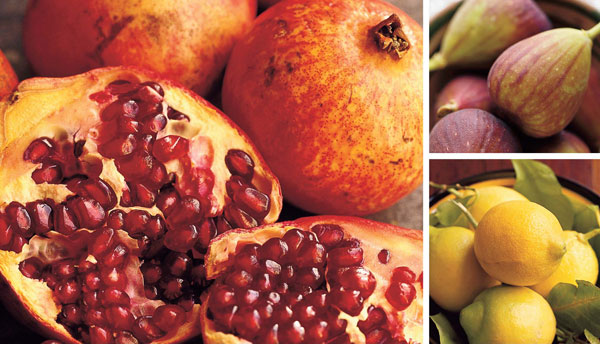
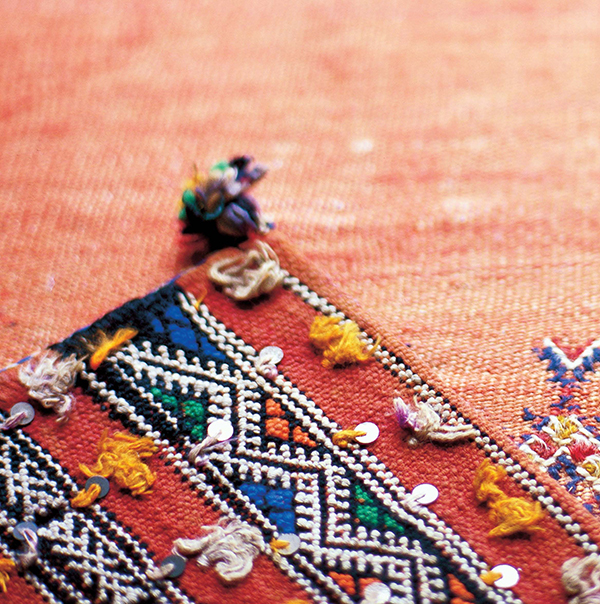
TAGINE
Spicy stews from Morocco
Ghillie Baan
photography by Martin Brigdale


Dedication
For Monica. To shopping in Marrakesh!
Acknowledgements
I would like to thank the team at Ryland Peters & Small: Alison Starling, for inviting me to write this book, and Liz Sephton and Ann Baggaley for whipping it into shape. And I am thrilled that the ever-so-skilled Martin Brigdale took the photographs and, as always, made each one look stunningly appetizing.
First published in Great Britain in 2007
by Ryland Peters & Small, Inc
519 Broadway, 5th Floor
New York, NY 10012
www.rylandpeters.com
20 19 18 17 16 15 14 13 12 11
Text Ghillie Ba an 2007
an 2007
Design and photographs Ryland Peters & Small 2007
Printed in China

For digital editions visit rylandpeters.com/apps.php
The authors moral rights have been asserted. All rights reserved. No part of this publication may be reproduced, stored in a retrieval system, or transmitted in any form or by any means, electronic, mechanical, photocopying, or otherwise, without the prior permission of the publisher.
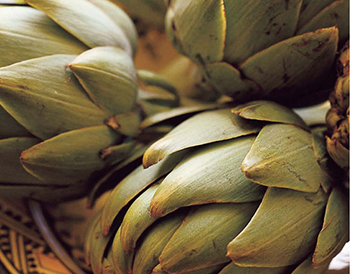
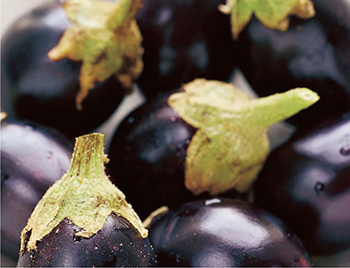
Library of Congress Cataloging-in-Publication Data
Basan, Ghillie.
Tagine : spicy stews from Morocco / Ghillie Basan; photography by Martin
Brigdale.
p. cm.
Includes index.
ISBN 978-1-84597-479-4
1. Cookery, Moroccan. 2. Stews. I. Title.
TX725.M8B39 2007
641.5964--dc22
2007012710
eISBN: 978 1 84975 319 7
ISBN-10: 1 84597 479 4
ISBN-13: 978 1 84597 479 4
Designer Liz Sephton
Editor Ann Baggaley
Production Gemma Moules
Publishing Director Alison Starling
Food Stylists Bridget Sargeson, Lucy McKelvie
Assistant Food Stylist Stella Sargeson
Stylist Helen Trent
Assistant Stylist Isolde Summerscale
Assistant Photographer Nat Davies
Indexer Hilary Bird
Note
All spoon measurements are level unless otherwise stated.
contents

The classic dish from the region of North Africa known as the MaghrebMorocco, Tunisia, and Algeriaa tagine is a glorified stew worthy of poetry. Aromatic and syrupy, zesty and spicy, or sweet and fragrant are just some of the words that come to mind. A dish of tender meat or succulent vegetables, simmered to perfection in buttery sauces with fruit, herbs, honey, and chiles, an authentic tagine is in a class of its own and has become a fundamental feature of Moroccan cuisine.
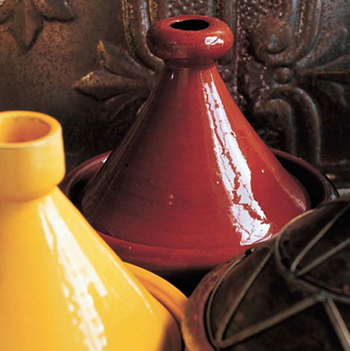
The name tagine (sometimes spelled tajine) is also given to the vessel in which the food is cooked: a shallow, round, earthenware pot with a unique conical lid designed to lock in moisture and flavors, cooking the food gently in a small amount of liquid. The finished dish can either be served piping hot straight from its cooking vessel, or tipped into one of the decorative versions of the pot, glazed in beautiful shades of blue and green, to take to the table.
Originally a Berber dish, the tagine has evolved with the history of the region as waves of Arab and Ottoman invaders, Moorish refugees from Andalusia, and French colonialists have left their influences on the cuisine. Classic tagines include combinations of lamb with dried prunes or apricots; chicken with preserved lemon and green olives; duck with dates and honey; and fish cooked with tomatoes, lime, and cilantro. In the modern Maghreb, the Berbers are still renowned for their tasty, pungent tagines made with onions and clarified butter.
Traditionally, tagines are served as a course on their own, with freshly baked flat breads or crusty loaves to mop up the delectable syrupy sauces, and are followed by a mound of couscous. The more modern way is to combine the courses and serve them with an accompanying salad. On festive occasions, the custom is to pile up a huge pyramid of couscous and hollow out the peak to form a well into which the tagine is spooned. However, most earthenware tagines are not big enough to cope with feasts, so large copper pots are often used instead.
The great secret of an authentic tagine is to simmer the ingredients over a low heat, so that everything remains deliciously moist and tender. Meat tagines may be cooked for several hours, the meat simmering gently in a seasoned, fragrant liquid until it is so tender it almost falls off the bone. Generally, dishes of vegetables, beans, or fish do not require long cooking times but still benefit from the tagine method in terms of enhanced taste and texture.
Traditionally, tagines are cooked over a clay stove, or brazier, which is stoked with charcoal to maintain constant heat. Such stoves diffuse the heat around the base of the tagine, enabling the liquid to reduce and thicken without drying out. Wood-burning ovens and open fires are used, too. However, wonderful tagines can also be produced using a modern burner or oven.
Most authentic tagines have a little hole at the top of the conical lid to release some of the steam, so that it doesnt try to escape at the seam between the base and the lid. If there is no hole, you will probably need at intervals to tilt the lid at an angle to release the steam yourself. When cooking in an oven, it is generally only the base of the tagine that is used.
There are a number of cooking tagines to choose from, but few of them come with a warning about their vulnerability over a conventional gas burner. Most of the factory-made vessels, whether they are glazed or not, tend to form hairline cracks when they are placed over a gas flame; and they cannot be used on an electric ring. So what do you do? For a glazed earthenware tagine, a heat diffuser is essential, otherwise it is worth splurging on a durable cast-iron version with a glazed, earthenware lid. A solid, heavy-based casserole pot is a good substitute, as long as you keep the heat very low. But for a tasty, succulent meal, full of flavor and adventure, it is well worth attempting to cook with the genuine article.
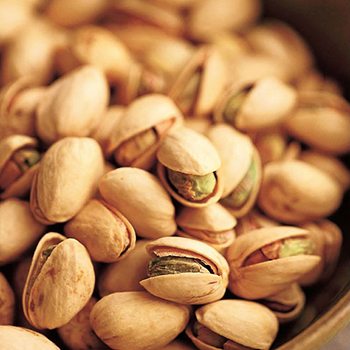
TAGINE ESSENTIALS
At the heart of an authentic tagine you will find several traditional ingredients that are indispensable if you want to achieve the delightful balance of hot, spicy, sweet, and tart. Most of these ingredients can be found in specialty stores, but it is well worth trying to make some of them at home.
Next page
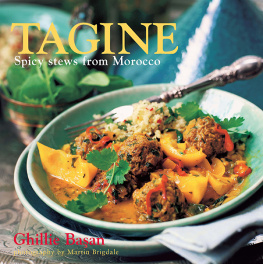
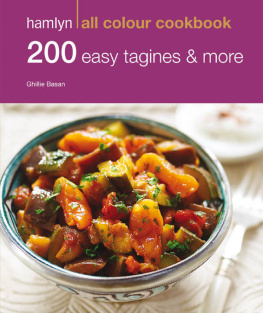
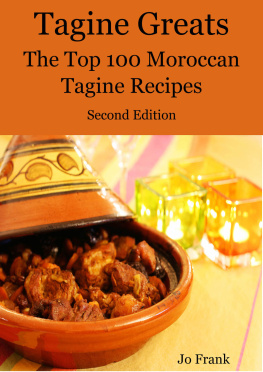
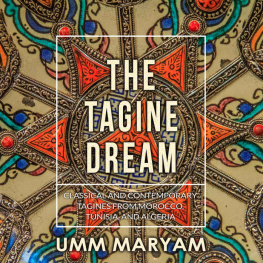
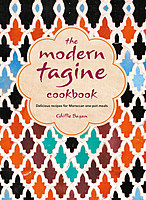
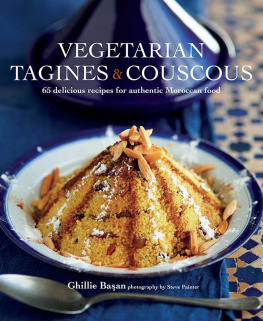
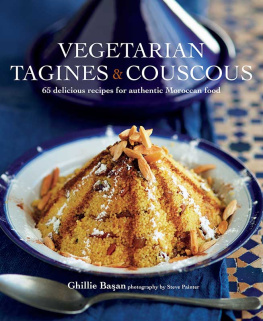

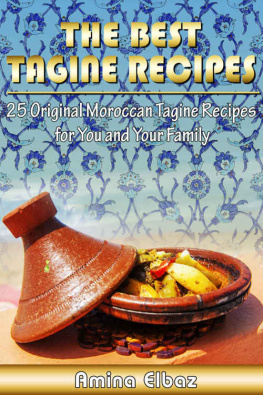
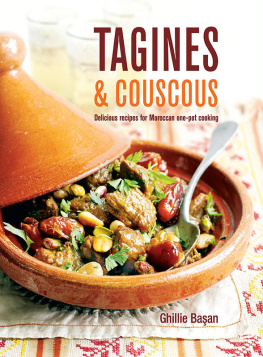






 an 2007
an 2007




